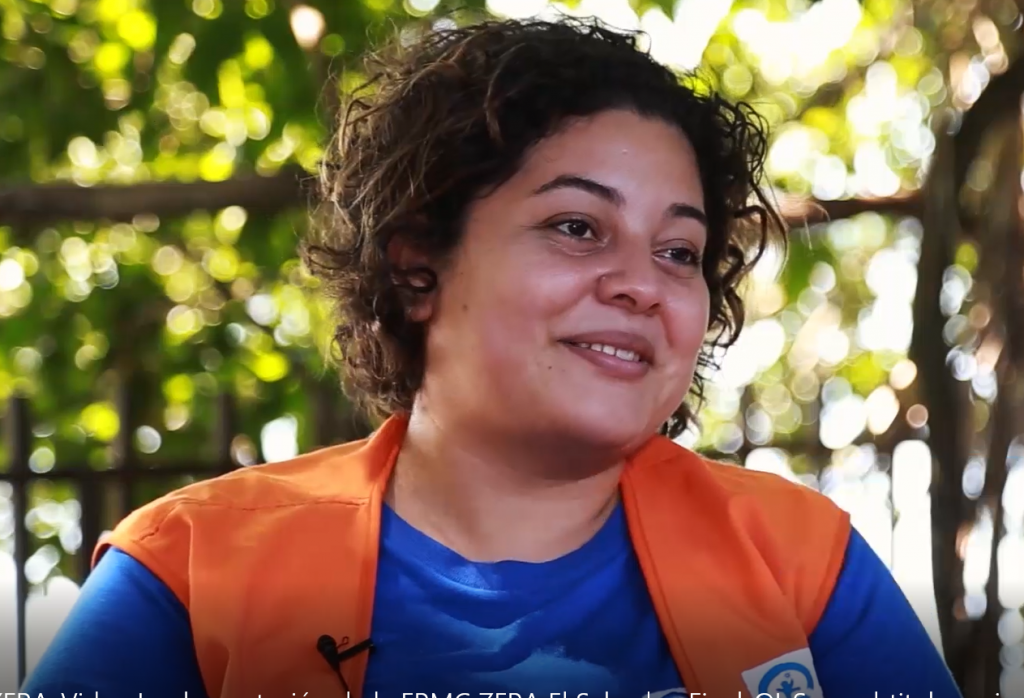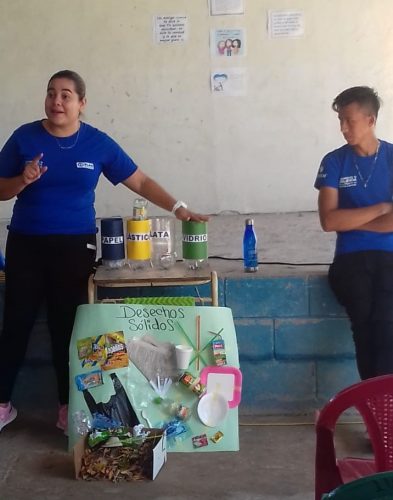Cristina is a 23-year-old woman who lives in a community in El Salvador at risk of flooding from a nearby water reservoir. Christina’s experience has motivated other young women in the community to participate in risk management processes developed by Plan International to build flood resilience. In this blog she shares her story.
Plan International (Plan) is a member of the Zurich Flood Resilience Alliance and implements the project “Increasing Flood Resilience in Central America” in communities in El Salvador, including where Cristina lives. The project is facilitating a better understanding of the community’s flood risk and works to increase preparedness among community members to respond swiftly and effectively in case of an emergency.

Cristina’s leadership and participation has been key to building resilience in her community. She participates in the community’s civil protection commission and in a youth committee who support risk management through different sensitisation campaigns and by using social media. This is Christina’s own telling of her experience working with Plan to build flood resilience in her community.
Christina shares her story
“Over the years I have seen how the community has been transformed and understood a lot more about the different challenges that affected my community at times during my childhood.
One memory that stands out is how during the rainy season water levels in the reservoir rose steadily and strong winds increased. There was so much rain that the courtyards of my house became flooded. At that time, I did not see the danger that this caused both to my house and my family.
A firsthand experience of flooding
In order to avoid exposure to this type of flooding, my family built the retaining wall higher. It worked for a while, but in 2011 the arrival of tropical storm “12E” brought more water than we expected. Despite everything my family had done to prevent it there was so much water that my house and the house of my neighbours were completely flooded.
When the street in front of our house was already flooded from the water reservoir, civil protection came to evacuate all the affected families.
From that moment, I understood the level of risk not only for my family, but for the whole community. People lost their possessions, but fortunately there was no loss of life. Since then my mind has restlessly been worrying about what else would have happened if the water level continued to rise, or if no one had evacuated us.
After the experience of this emergency, my community became interested in monitoring the reservoir’s water levels in order to be well prepared in case of future floods. But we still needed to learn more about how to respond to future floods.
Working with Plan International to build community flood resilience
In 2018, when Plan started working with our community to implement the project “Increasing Flood Resilience in Central America” as part of the Zurich Flood Resilience Alliance, all was new to me. I didn’t know the meaning of the word “resilience.”
One of the first activities Plan did was to carry out a survey to obtain information on how the community was doing in terms of flood preparedness and response. The results of the Flood Resilience Measurement for Communities (FRMC) showed that my community was defenseless against any flood situation, as there was no preparedness or response plans in place, there was no commission to lead us in case of emergencies.
Plan trained us on the importance of flood resilience and facilitated the creation of the Community Civil Protection Commission in my community. This is how I began working to build the resilience of my community.
We were also trained in early warning before an emergency, the setting up of a temporary shelter, and the organisation and logistics required within the shelter. Apart from this, we were trained and certified in first aid.
The community taking action to build resilience

After forming the commission, we began thinking about what actions to take to improve different risks that affected or could affect our community. We created a work plan with different activities to develop during the year.
Activities worth highlighting are: through workshops like the one Christina is pictured at to the right, raising awareness about solid waste management among families in different sectors of the community, how to classify solid waste, waste collection campaigns, creation of a recycling centre, and signposting of evacuation routes in the community.
By minimising the amount of waste blocking drainage systems flood risk is reduced.
In November 2020 the community civil protection commission opened a temporary shelter as a preventive measure after alerts issued by the authorities ahead of to the possible impact of hurricane “Eta.” We prepared and evacuated people who were at risk of being affected.
Members of the commission put into practice every aspect learned during training. We also observed our limitations, like the absence of an Early Warning System and insufficient infrastructure, and recognised the need to improve these before a new emergency arises.
I feel very proud of the work I’m doing and the change our community is seeing as we’re improving our quality of life and building resilience to floods.
Monday 8 March is International Women’s day and the Zurich Flood Resilience Alliance is celebrating women leaders in the organisations and communities we work with. If you want to hear from more inspiring women in leadership roles follow us on twitter at @floodallliance and check out our other blogs.

Comments